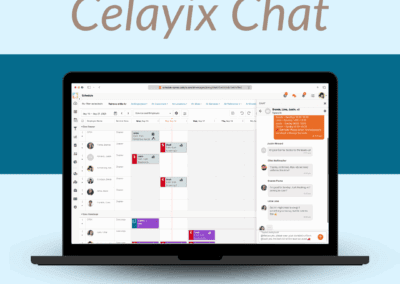In today’s fast-paced and competitive business environment, having the right employees in the right time is crucial for success. However, traditional employee scheduling methods, such as creating schedules weeks or even months in advance, can leave businesses struggling to keep up with fluctuations in customer demand. This is where demand-driven employee scheduling comes in.
What is Demand Driven Employee Scheduling?

Demand-driven employee scheduling is a method of creating schedules based on real-time data and forecasting. This approach enables businesses to better predict customer demand. Then, they can ensure that they have the right number of employees scheduled at the right time. By doing so, businesses can increase efficiency, improve customer service, and ultimately drive more sales.
Automation of employee scheduling
Demand driven scheduling can be seen as an opportunity to automate your employee scheduling process. With automation, businesses can use software to create and manage schedules for their employees. This can save a significant amount of time for managers, who would otherwise have to manually create schedules, make changes to them, and communicate them to employees. Additionally, automation can help ensure that schedules are created in a fair and balanced way, without any biases or favoritism.
Automation can also help with managing time-off requests, shift trades, and other scheduling conflicts. When employees can submit requests through an automated system like Celayix, managers can quickly and easily review and approve or deny them. This eliminates the need for manual communication between employees and managers, and ensures that requests are processed in a timely manner. Automation can also help managers identify potential scheduling conflicts before they happen, and take steps to resolve them before they disrupt operations. Overall, automation can help make employee scheduling more efficient, fair and less prone to human errors. This in turn can lead to higher employee satisfaction, reduce absenteeism and turnover, improve team collaboration and increase productivity.
With the right tools, schedulers can automate their demand driven scheduling in order to streamline operations.
Benefits of Demand Driven Scheduling
One of the key benefits of demand-driven employee scheduling is that it allows businesses to respond quickly to changes in customer demand. For example, it can be common for businesses to experiences a sudden increase in customers. With this scheduling method, they can quickly schedule additional employees to meet that demand. Conversely, if business slows down, they can adjust the schedule accordingly to minimize labor costs.
Additionally, demand-driven employee scheduling can also help reduce labor costs by ensuring that businesses are not overstaffed during slow periods. By having the right number of employees scheduled at the right time, businesses can avoid unnecessary labor expenses and improve their bottom line.
In order to implement demand-driven employee scheduling, businesses need to have the right tools and technologies in place. Cloud-based scheduling software can provide real-time data on customer demand, allowing businesses to make informed scheduling decisions. Additionally, advanced forecasting algorithms can help businesses predict customer demand and plan schedules accordingly.

Another important aspect is the collaboration with the employees. Having a clear and transparent communication channel can help align their schedule preferences with the real-time demand. It can also make sure that the employees are not overworked. As you know, this might lead to burnout, a high-turnover rate, and ultimately decrease productivity. Collaboration based employee scheduling generally includes self-scheduling or shift bidding. However, even by simply allowing your employees to declare their availability is a great starting point.
How does Celayix support Demand Driven Scheduling?
There are many ways that Celayix can support a scheduler in a move to demand driven scheduling. Perhaps the most useful, is our labor forecasting tool. The Celayix labor forecasting tools helps you to create an employee schedule with the perfect number of shifts to optimize your workforce. This tool is based on event ratios. Event ratios are the key input that needs to be defined. They will be used to generate the necessary shifts based on the specified event. This will generally be a one-time setup and you can work with one of our implementation specialists to populate these.
Pair this labor forecasting tool with our advanced AI scheduling tools for the ultimate demand based scheduling resources. Our AI learns from all of your previous scheduling history. It then ensures that you have the best employees in place at the right time. Not only do we have these tools on hand, but we also have some of the best collaborative scheduling tools on the market. These include self scheduling and shift bidding, both of which have to tools to provide autonomy to your employees while leaving ultimate control to you, the scheduler. If you’d like to learn more about how our cloud-based, employee scheduling software can help you utilize demand based scheduling, chat to a solutions advisor today.
In conclusion, demand-driven employee scheduling is an essential strategy for businesses looking to increase efficiency, improve customer service, and ultimately drive more sales. By implementing this approach, businesses can better predict customer demand, schedule the right number of employees at the right time, and ultimately improve their bottom line.




